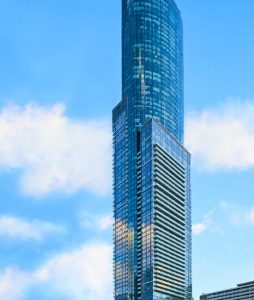While building designs continue to evolve to be architecturally unique and attractive, most new residential developments fall short of the green standard needed to curb climate change and meet Canada’s emissions goals. Here, Danial Hadizadeh, CEO at Mitrex, offers insight into the latest solar energy products and their long-term sustainable benefits.
“For the most part in Canada, developers of multi-residential buildings are missing out on the opportunity to curb emissions and become self-sustaining entities, both environmentally and financially,” he says. “As green building materials continue to advance to mimic the look and feel of traditional building materials, adoption will increase, allowing architects to continue to showcase their creativity while creating power-generating hubs.”
Though there’s a long and fascinating history behind photovoltaics (PV), recent advancements in technology have made solar energy far more cost efficient and accessible, with a host of products and benefits that only seem to be growing. According to Hadizadeh, solar cladding, glass and railings are able to turn any building into a self-sustaining power plant while maintaining the look of traditional buildings.
 “Solar building-integrated photovoltaic (BIPV) systems such as ours create clean energy, while still matching the aesthetics of man-made materials like cement, porcelain, marble or even wood,” he explains. “This allows architects and designers to maintain creativity and adhere to building designs while also creating a self-sufficient power plant from which building owners can harness surplus power for a profit.”
“Solar building-integrated photovoltaic (BIPV) systems such as ours create clean energy, while still matching the aesthetics of man-made materials like cement, porcelain, marble or even wood,” he explains. “This allows architects and designers to maintain creativity and adhere to building designs while also creating a self-sufficient power plant from which building owners can harness surplus power for a profit.”
Hadizadeh also highlights the versatility of solar products, as these can go much further than just residential and industrial buildings.
“Our goal is to transform everything light touches into energy,” he says. “There is great opportunity to implement these systems into wider applications to create greener and healthier cities. BIPV products can help maintain greenhouses throughout the winter, allowing more vegetation to be grown all year long with no carbon cost. Bus shelters, highway sound barriers, and even military applications are all viable candidates for solar technology.”
In conclusion, Hadizadeh says that with these BIPV products becoming more accessible and affordable, Canadian developers no longer have to choose between aesthetics and environmentally conscious materials.
Danial Hadizadeh is CEO at Mitrex, a leading Canadian manufacturing in solar technology offering solar cladding, windows, roofs, and panels. For more information visit www.mitrex.com.





